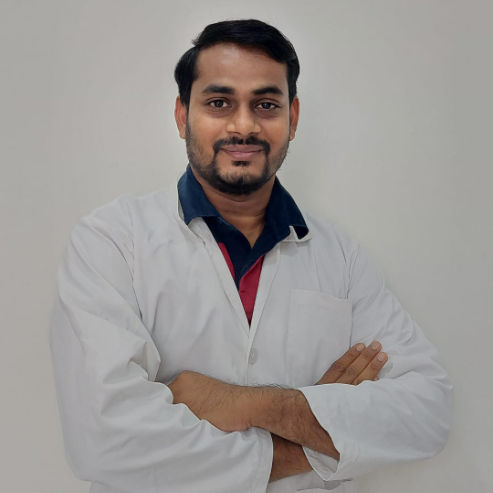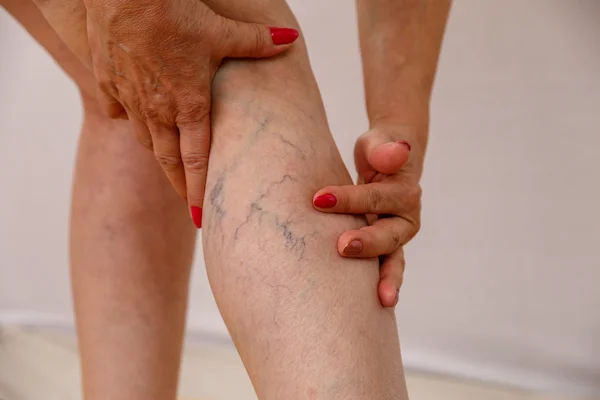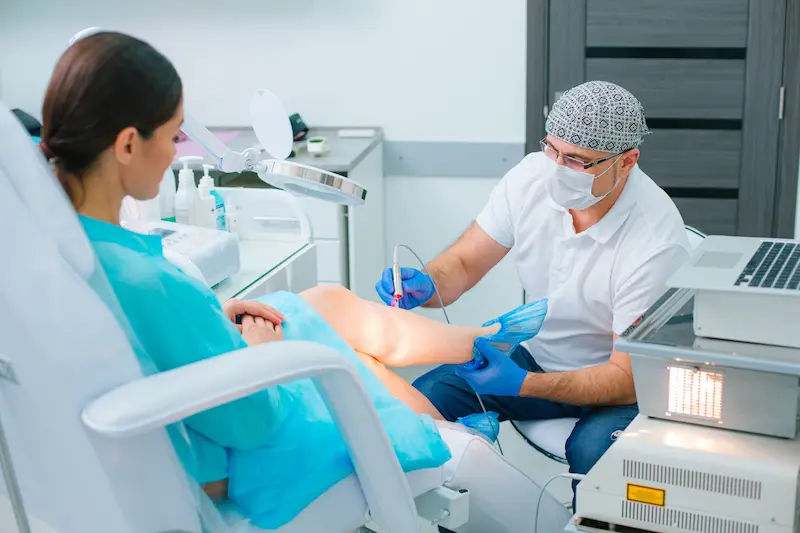Guide to What Are Varicose Veins
Learn what causes varicose veins, their symptoms, complications, and the best treatment and prevention methods. Understand risk factors, diagnosis, and recovery options to improve your vein health.

Written by Dr. Siri Nallapu
Reviewed by Dr. Rohinipriyanka Pondugula MBBS
Last updated on 29th Oct, 2025

Introduction
If you’ve noticed twisted, bulging blue or purple lines just under the skin of your calves or thighs, you’re likely looking at varicose veins. They’re common, often uncomfortable, and sometimes a source of worry or embarrassment. The good news: effective options exist—from simple daily habits to minimally invasive procedures that seal off the problem veins and relieve symptoms. In this guide, we explain what varicose veins are, why they happen, and how to tell normal vein changes from signs of trouble. You’ll learn how doctors diagnose varicose veins, which treatments actually work, what recovery looks like, and how to prevent recurrences. We also include special advice for pregnancy, athletes, frequent travellers, and people who stand or sit for long periods at work. Whether you’re managing aching legs at the end of the day or wondering if compression stockings are right for you, this practical, evidence-based guide will help you navigate your choices and feel more confident about your vein health.
What Are Varicose Veins?
Varicose veins are enlarged, twisted superficial veins—most often in the legs—that become visible when the tiny one-way valves inside them stop working properly. In healthy legs, veins return blood back to the heart against gravity.
Small leaflet valves inside the veins open to allow upward flow and close to prevent blood from falling back down. When valves weaken or fail, blood pools in the vein (venous reflux), increasing pressure, stretching the vein walls, and making veins bulge and coil at the surface.
How Healthy Leg Veins Work
- Arteries bring oxygen-rich blood down to your legs; veins carry oxygen-poor blood back up.
- The “calf muscle pump” squeezes deep veins with every step, pushing blood upward, while superficial veins drain into deep veins through perforator veins.
- Valves keep flow moving up; when they fail, pressure backs up into superficial veins, creating varicose veins and, over time, chronic venous insufficiency.
Varicose Veins vs Spider Veins vs Reticular Veins
- Spider veins (telangiectasias) are tiny, web-like red or blue lines right under the skin. They’re often cosmetic and not necessarily a sign of valve failure.
- Reticular veins are small, blue-green veins (1–3 mm) that can feed spider veins.
- Varicose veins are larger (usually over 3 mm), ropey, raised, and can cause symptoms like aching, heaviness, or itching.
Where Varicose Veins Usually Appear and Why
- Common sites: inner thigh and calf (great saphenous vein territory), back of the calf (small saphenous vein), and around the knee.
- Standing for long periods, pregnancy, genetics, and age-related changes increase venous pressure and valve wear and tear.
Consult Top Specialists Here
How Common Are They, and Who Is at Risk?
Varicose veins are very common—estimates suggest 20–30% of adults are affected, with prevalence increasing with age and slightly higher rates in women, especially during and after pregnancy. Many people have visible veins without symptoms; others experience discomfort, swelling, and skin changes.
Major Risk Factors
- Age: Vein walls and valves lose elasticity over time.
- Genetics: Family history strongly increases risk; inheriting connective tissue traits may predispose to valve weakness.
- Pregnancy: Hormones relax veins; blood volume increases; the uterus compresses pelvic veins. Symptoms often improve after birth, but some veins persist.
- Weight and height: Higher BMI and taller stature increase venous pressure.
- Occupation: Jobs with prolonged standing (retail, healthcare, teaching, hairdressing) or long sedentary hours (drivers, desk jobs) contribute to venous pooling.
- Prior leg injury, DVT, or pelvic vein issues.
- Hormonal therapy (e.g., some forms of HRT) and chronic constipation can also play a role by increasing intra-abdominal pressure.
Prevalence Notes and Sex Differences
- While women seek care more often, studies show men are also frequently affected and may present later, sometimes
with more advanced skin changes. - Ethnicity and lifestyle factors (activity, diet, footwear) contribute modestly, but occupational patterns and pregnancy account for much of the difference in presentation.
Symptoms, Complications, and When to See a Doctor
Here are some symptoms to watchout for:
Common Symptoms
- Aching, heaviness, throbbing, or burning in the legs, often worse after standing and toward day’s end.
- Swelling (especially around ankles), nighttime cramps, restlessness, itching over veins.
- Skin changes near the ankle: dryness, darkening (hyperpigmentation), thickening (lipodermatosclerosis), or eczema-like patches.
Complications to Know
- Superficial thrombophlebitis: A painful, firm, red cord along a vein.
- Bleeding from a superficial vein after minor trauma.
- Venous leg ulcers: Non-healing wounds, usually near the inner ankle.
- Rarely, extension of clot into deeper veins (DVT) or pulmonary embolism risk.
When to Seek Care
- Urgent: Sudden, severe leg swelling or pain, shortness of breath, or chest pain—these can signal a DVT or pulmonary embolism and need emergency evaluation.
- Prompt: Rapidly worsening pain, new skin discolouration, a weeping wound, or an area that feels hot and tender.
- Routine: Persistent aching, swelling, cramps, or cosmetic concerns that affect your activity or quality of life.
If your symptoms persist beyond two weeks or limit your daily activities, consider consulting a doctor online with Apollo 24|7 for further evaluation. If you notice an ulcer or a worsening skin patch, book a physical visit to a doctor with Apollo 24|7 for a thorough exam and ultrasound guidance.
How Doctors Diagnose Varicose Veins
Clinical Exam
- Your clinician will examine your legs while you’re standing to assess vein patterns, tenderness, skin changes, and swelling distribution.
- They may check ankle pulses to ensure arterial flow is adequate before recommending compression stockings.
Duplex Ultrasound: The Key Test
- Combines standard ultrasound imaging with Doppler to show both anatomy and blood flow direction.
- Identifies which veins reflux (leaky valves), where the problem starts (e.g., groin junction), and whether there are clots. This “vein map” guides treatment (e.g., whether endovenous ablation, foam sclerotherapy, or surgery is best).
- It’s painless, non-invasive, and typically done with you standing or in reverse Trendelenburg to provoke reflux.
CEAP Classification in Plain English
- C: Clinical class (C0 to C6—ranging from no visible disease to active ulcers).
- E: Aetiology (e.g., hereditary, secondary to DVT).
- A: Anatomy (which veins are involved).
- P: Pathophysiology (reflux vs obstruction).
Knowing your CEAP class helps prioritise treatment. For example, C2 (varicose veins) with symptoms may be eligible
for ablation; C4–C6 (skin changes/ulcer) are higher priority.
Pre-Compression Checks and Other Tests
- Ankle-Brachial Index (ABI) may be performed if there’s concern for peripheral arterial disease before prescribing high-grade compression.
- Blood tests aren’t usually needed, but if you have non-healing ulcers or diabetes risk, HbA1c and nutritional markers may be helpful. Apollo 24|7 offers convenient home collection for tests like HbA1c or vitamin D if your clinician recommends them.
Consult Top Specialists Here
At-Home Care and Everyday Habits That Help
Here are some at home care and everyday habits:
Compression Stockings: Choosing and Using
- Graduated compression (typically 15–20 mmHg for prevention, 20–30 mmHg for symptomatic varicose veins) reduces swelling and discomfort by supporting vein walls and improving flow.
- Measure your legs in the morning for accurate sizing; knee-highs are often sufficient if the reflux source is above the knee.
- Put them on first thing in the morning before swelling starts; replace pairs every 3–6 months as elasticity wanes.
Movement and the “Calf Pump”
- Aim for 5–10 minutes of walking every hour you’re awake. If you’re desk-bound, do 30–40 ankle pumps and 10–15 calf raises each hour.
- Micro-break formula: 60 seconds of movement every 45–60 minutes offsets prolonged standing or sitting.
Leg Elevation, Sleep, and Skin Care
- Elevate legs above heart level for 15–20 minutes in the evening to reduce swelling.
- Moisturise lower legs daily to prevent itching and skin cracking. If you see brown discolouration, avoid trauma and seek medical advice early.
- Sleep with a small pillow under the calves if swelling is prominent; avoid heat exposure that dilates veins (very hot baths, saunas) if symptoms flare.
Workplace and Travel Strategies
- On flights or long drives, walk or do calf pumps every hour; consider travel compression socks.
- Rotate tasks if you stand for work; alternate shoes with different heel-to-toe drops to vary calf loading.
- Hydration helps keep blood viscosity lower; pair fluids with movement.
Medical and Procedural Treatments That Work
Guideline-Supported Treatment Sequence
NICE recommends endothermal ablation (laser EVLA or radiofrequency RFA) as first-line for refluxing saphenous veins; if unsuitable, ultrasound-guided foam sclerotherapy; if unsuitable, surgery (ligation/stripping). Compression alone is not a first-line definitive treatment unless interventions are inappropriate.
Endovenous Ablation (EVLA/RFA)
- A thin catheter is inserted into the refluxing vein; heat seals it shut from the inside. Local anaesthesia, tiny punctures, and same-day discharge are typical.
- Recovery: walking the same day; most people resume normal activities within 1–3 days. Bruising and tightness are common for a week or two.
- Evidence: Endovenous ablation has high vein-closure rates and faster recovery vs surgery, with similar or better symptom relief and quality-of-life gains.
Foam Sclerotherapy and Microphlebectomy
- Ultrasound-guided foam sclerotherapy injects a sclerosant foam to scar and close targeted veins. Useful for tributaries and when ablation isn’t suitable.
- Microphlebectomy removes surface varicose veins through micro-incisions; often combined with ablation for cosmetic and symptomatic improvement.
- Recurrence can be higher with foam when used on main trunk veins compared to EVLA/RFA, but it’s effective for select patterns.
Surgery and Newer Techniques
- Surgical ligation and stripping are effective but have longer recovery and more bruising; now used less commonly where endovenous options are available.
- Cyanoacrylate “glue” closure and mechanochemical ablation avoid heat and tumescent anaesthesia; early outcomes are promising, though long-term data are still maturing.
- Risks across procedures: minor nerve irritation, bruising, pigmentation, superficial phlebitis; DVT is uncommon with proper protocols.
Living With Varicose Veins: Special Situations
During Pregnancy
- Hormonal and mechanical changes make varicose veins common in pregnancy; many improve within months after delivery.
- Focus on compression, left-side sleeping to reduce caval pressure, and frequent movement. Definitive procedures are usually deferred until after pregnancy unless complications arise.
- If symptoms are severe postpartum and persist, consult a doctor online with Apollo 24|7 to plan ultrasound and potential treatment.
Athletes and Active Adults
- Endurance sports are generally safe. Cross-train with calf-strengthening (e.g., stair repeats) to augment the calf pump.
- Post-workout compression can reduce soreness and swelling; avoid heavy wraps that restrict arterial flow.
Older Adults and Those With Chronic Conditions
- Prioritise safe compression (ensure pulses are adequate), gentle mobility, and skin care.
- If you have diabetes or neuropathy, inspect skin daily; moisturise and protect bony prominences to prevent ulcers.
Cost, Access, and Choosing a Provider
- Coverage for procedures often depends on documented symptoms, failed conservative therapy, and ultrasound-proven reflux.
- Choose a provider who routinely performs multiple modalities (EVLA, RFA, foam, phlebectomy) and maps treatment to your anatomy and goals.
Prevention and Long-Term Outlook
Can You Prevent Varicose Veins?
You can’t fully change genetics or ageing, but you can reduce risk and slow progression: maintain a healthy weight, move often, elevate legs, and wear compression during high-risk days.
Reducing Recurrence After Treatment
- Keep walking daily for at least 2–4 weeks post-procedure to optimise vein closure and reduce soreness.
- Maintain or resume compression as advised; address residual tributaries if they become symptomatic or cosmetically bothersome.
Venous Ulcers and How to Avoid Them
- Early recognition of skin changes (darkening, thickening) is crucial. Treat reflux, use appropriate compression, and care for skin to prevent breakdown.
- If a wound appears or fails to heal within two weeks, book a physical visit to a doctor with Apollo 24|7 for prompt ulcer care and duplex-guided management.
Myths vs Facts
- Myth: Crossing your legs causes varicose veins. Fact: It may worsen symptoms temporarily but isn’t a root cause.
- Myth: Only women get varicose veins. Fact: Men are underdiagnosed and often present later.
- Myth: Surgery is your only option. Fact: Minimally invasive ablation and foam are first-line for most people per guidelines.
Conclusion
Varicose veins are more than a cosmetic issue—they’re a sign that vein valves aren’t keeping blood moving upward efficiently. The result is pressure, swelling, and sometimes skin damage if left unaddressed. The upside is that proven solutions exist. Simple strategies like daily movement, micro-breaks, leg elevation, and properly fitted compression stockings can dramatically improve how your legs feel by bedtime. When symptoms persist or ultrasound shows significant reflux, minimally invasive procedures such as endovenous laser or radiofrequency ablation offer durable relief and short recovery times. The best plan targets the “source” vein first, then fine-tunes cosmetic veins as needed. If you’re noticing persistent discomfort, skin colour changes, or a slow-to-heal spot near your ankle, don’t wait for it to worsen—consult a doctor online with Apollo 24|7 to discuss an exam and ultrasound, and to decide whether at-home care or a procedure is right for you. With the right mix of daily habits and, if needed, targeted treatment, most people get back to light legs and active days.
Consult Top Specialists Here
Consult Top Specialists Here

Dr. Debabrata Chakraborty. Age Above Sixteen Yrs.
Neurologist
15 Years • MD (Gen. Med. ), DM (Neuro), Fellow in Stroke & Cerebrovascular Diseases
Kolkata
Apollo Multispeciality Hospitals , Kolkata, Kolkata
(300+ Patients)

Dr. Aditendraditya Singh Bhati
Neurosurgeon
18 Years • MBBS(2004), DNB Neurosurgery(2014); MNAMS; Fellow Neuroendoscopy
Delhi
Apollo Hospitals Indraprastha, Delhi
(100+ Patients)

Dr. Ganeshgouda Majigoudra
Neurologist
10 Years • MBBS, MD ( GENERAL MEDICINE) DM (NEUROLOGY)
Bengaluru
Apollo Clinic, JP nagar, Bengaluru

Dr. E Prabhakar Sastry
General Physician/ Internal Medicine Specialist
40 Years • MD(Internal Medicine)
Manikonda Jagir
Apollo Clinic, Manikonda, Manikonda Jagir
(150+ Patients)

Dr Rajashekar Mummadi
Neurologist
3 Years • MBBS, DNB General Medicine, DRNB Neurology
Hyderabad
Dr Ram's Neuro Clinic, Hyderabad
Consult Top Specialists Here

Dr. Debabrata Chakraborty. Age Above Sixteen Yrs.
Neurologist
15 Years • MD (Gen. Med. ), DM (Neuro), Fellow in Stroke & Cerebrovascular Diseases
Kolkata
Apollo Multispeciality Hospitals , Kolkata, Kolkata
(300+ Patients)

Dr. Aditendraditya Singh Bhati
Neurosurgeon
18 Years • MBBS(2004), DNB Neurosurgery(2014); MNAMS; Fellow Neuroendoscopy
Delhi
Apollo Hospitals Indraprastha, Delhi
(100+ Patients)

Dr. Ganeshgouda Majigoudra
Neurologist
10 Years • MBBS, MD ( GENERAL MEDICINE) DM (NEUROLOGY)
Bengaluru
Apollo Clinic, JP nagar, Bengaluru

Dr. E Prabhakar Sastry
General Physician/ Internal Medicine Specialist
40 Years • MD(Internal Medicine)
Manikonda Jagir
Apollo Clinic, Manikonda, Manikonda Jagir
(150+ Patients)

Dr Rajashekar Mummadi
Neurologist
3 Years • MBBS, DNB General Medicine, DRNB Neurology
Hyderabad
Dr Ram's Neuro Clinic, Hyderabad
Consult Top Specialists Here

Dr. Debabrata Chakraborty. Age Above Sixteen Yrs.
Neurologist
15 Years • MD (Gen. Med. ), DM (Neuro), Fellow in Stroke & Cerebrovascular Diseases
Kolkata
Apollo Multispeciality Hospitals , Kolkata, Kolkata
(300+ Patients)

Dr. Aditendraditya Singh Bhati
Neurosurgeon
18 Years • MBBS(2004), DNB Neurosurgery(2014); MNAMS; Fellow Neuroendoscopy
Delhi
Apollo Hospitals Indraprastha, Delhi
(100+ Patients)

Dr. Ganeshgouda Majigoudra
Neurologist
10 Years • MBBS, MD ( GENERAL MEDICINE) DM (NEUROLOGY)
Bengaluru
Apollo Clinic, JP nagar, Bengaluru

Dr. E Prabhakar Sastry
General Physician/ Internal Medicine Specialist
40 Years • MD(Internal Medicine)
Manikonda Jagir
Apollo Clinic, Manikonda, Manikonda Jagir
(150+ Patients)

Dr Rajashekar Mummadi
Neurologist
3 Years • MBBS, DNB General Medicine, DRNB Neurology
Hyderabad
Dr Ram's Neuro Clinic, Hyderabad
More articles from Varicose Veins
Frequently Asked Questions
1) What’s the difference between spider veins and varicose veins?
Spider veins are tiny, web-like surface veins; varicose veins are larger, bulging, and more likely to cause aching or swelling. Duplex ultrasound helps determine if deeper reflux is present.
2) Do compression stockings really help varicose veins?
Yes. Graduated compression reduces swelling and discomfort and supports vein walls. They don’t cure valve failure but are effective for symptom relief and prevention, especially during long standing or travel.
3) How long is recovery after endovenous laser ablation?
Most people walk the same day and return to normal activities within 1–3 days. Expect mild bruising or tightness for a week or two.
4) Can varicose veins cause blood clots?
Superficial clots (thrombophlebitis) can occur in varicose veins; extension into deep veins (DVT) is less common but possible. Sudden swelling or chest symptoms are urgent—seek immediate care.
5) When should I see a doctor for varicose veins?
If symptoms persist beyond two weeks, interfere with daily life, or you notice skin colour changes, bleeding, or a non-healing sore, consult a doctor with Apollo 24|7 for an exam and duplex ultrasound.

